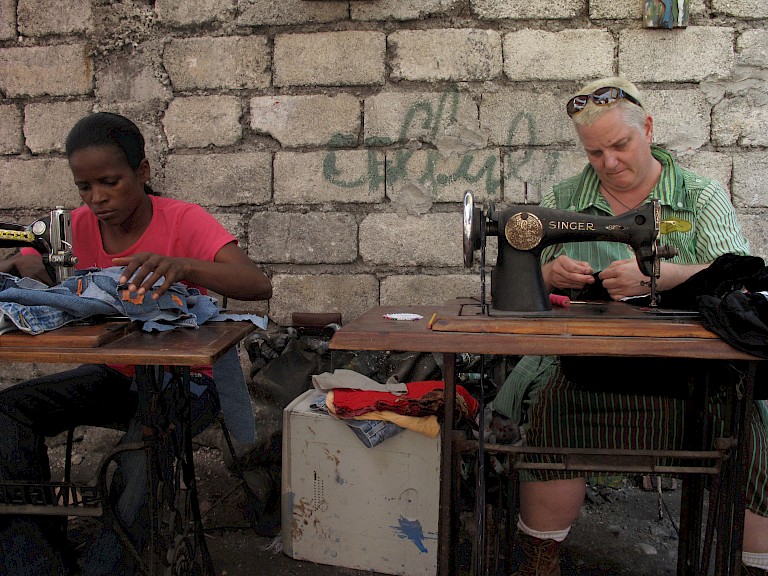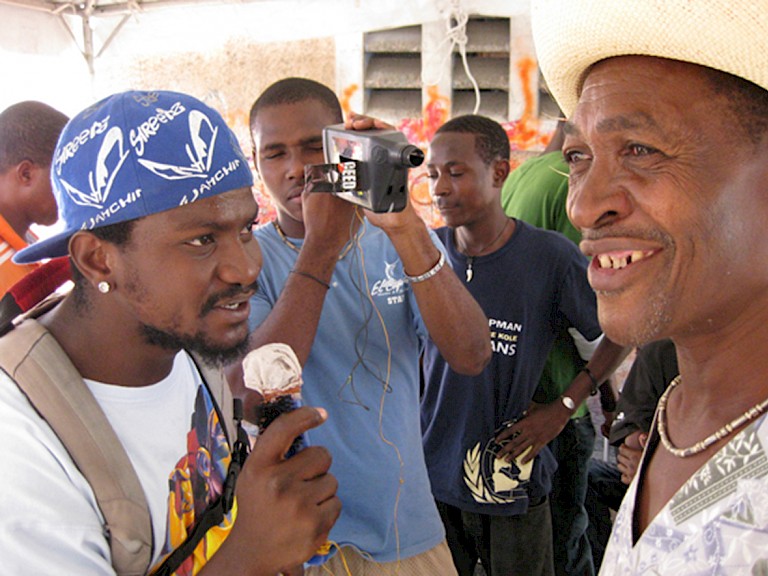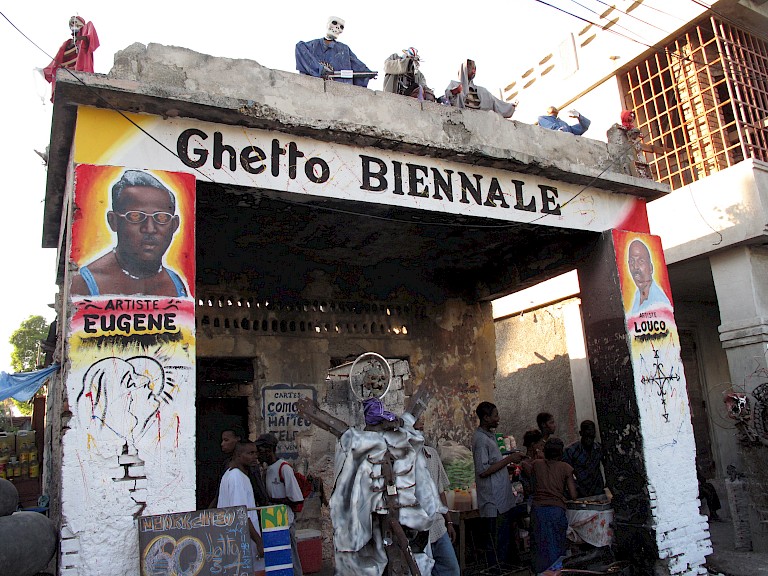



Visiting artists for the first Ghetto Biennale began arriving in late November 2009 and had three weeks to create projects on-site, collaborating with local artists and communities and using materials available in the Grand Rue neighborhood. The 35 resulting projects ranged in form and scope. Carole Lung Francis and tailor Jonas Labaze, established “Made in Haiti”—fashions created from second-hand clothing donated by charities. Jesse Darling and neighborhood children and teenagers built “Trash Church,” a venue constructed from discarded materials that hosted music concerts, exhibits, and film screenings. Partnering with a healthcare organization, Seitu Jones created and dispersed over 1,000 clay balls filled with floral and grass seeds to “green” the city. Local teenagers took on the role of foreign reporters for the performance piece “Tele Geto,” turning a critical, magnified eye on the biennale and the “outsider lens” often focused on Haiti.
Each iteration of the Ghetto Biennale (2009, 2011, and 2013) has brought over $60,000 into the community—particularly significant as the neighborhood is a designated “red zone,” avoided by foreign workers and NGOs. The events have sparked a number of ongoing collaborations, projects, and opportunities, including overseas exhibitions and residencies for over 15 members of Atis Rezistans. In addition to visiting artists and academics, the events have been popularly attended by local audiences and have drawn participation from artists across Haiti.
In fitting with Atis Rezistans’ aesthetic of repurposed cultural detritus, the Ghetto Biennale is an act of appropriation. Taking on the cultural institution of the biennale, it bridges normally distinct worlds—the biennale and the ghetto—and in doing so, holds the potential to problematize and develop a greater understanding of both. Many foreign artists arrived in 2009 eager to critique established, Western-dominated art institutions, often through ephemeral practices, while many of their Haitian counterparts sought to gain access to these very institutions and find markets for selling their object-based work. The devastating earthquake of January 2010 added pressure to the second Ghetto Biennale as well as the conflation of the art event with needed charity. Concerns linger over how to create common ground, avoid an exoticizing treatment of host communities, and expand participation. Each iteration seeks strategies to learn from and address challenges from a shared theme, to a “lens free” setting, to the replacement of a concluding academic conference with a more inclusive, participatory congress.
The friction between worlds can create rawness and as globalization expands, this makes projects like the Ghetto Biennale that take on these sensitive and contentious boundaries with unflinching and continued commitment all the more needed.
All copyright belongs to Shanghai Academy of Fine Arts, Shanghai University.



